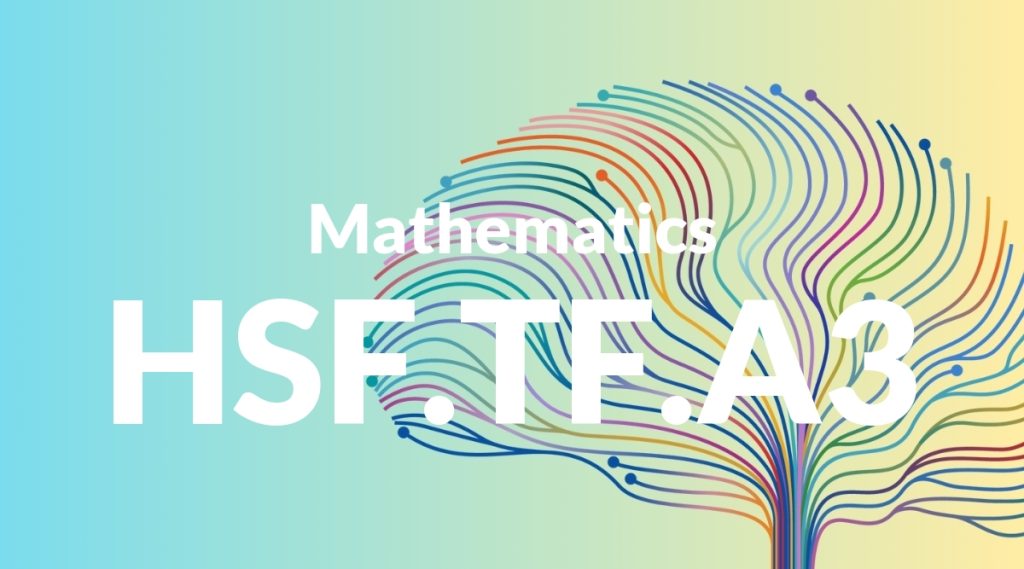Standard: HSF.TF.A3 – (+) Use special triangles to determine geometrically the values of sine, cosine, tangent for π/3, π/4 and π/6, and use the unit circle to express the values of sine, cosine, and tangent for x, π + x, and 2π – x in terms of their values for x, where x is any real number.
Grade level: High School: Functions
Subject: Mathematics
Domain: Trigonometric Functions
Teacher Overview
This standard focuses on using special triangles and the unit circle to determine the values of sine, cosine, and tangent for specific angles. Understanding this standard is crucial as it lays the foundation for more complex trigonometric concepts and applications in various fields such as physics, engineering, and computer science. Before tackling this standard, students should be comfortable with basic trigonometric ratios, properties of special right triangles, and the unit circle. They should also understand the concept of radians and how they relate to degrees.
Mastering this standard prepares students for more advanced trigonometric identities and their applications in solving equations and modeling real-world phenomena. This knowledge is also foundational for calculus topics involving trigonometric functions.
Common Misconception 1
A common misconception is that the trigonometric values for angles like π + x or 2π – x are different from those for x. This is incorrect because trigonometric functions are periodic, meaning their values repeat every 2π. This periodicity is a fundamental property of the unit circle.
Intervention 1
To address this misconception, use the unit circle to visually demonstrate the periodic nature of trigonometric functions. Highlight the symmetry and how angles relate to each other around the circle. Reinforce this with practice problems that require students to find equivalent angles and their trigonometric values.
Common Misconception 2
Another misconception is that the trigonometric values for π/3, π/4, and π/6 are arbitrary. In reality, these values are derived from the properties of special triangles (30-60-90 and 45-45-90 triangles).
Intervention 2
To correct this, engage students in constructing these special triangles and calculating the trigonometric ratios. Use visual aids and interactive activities to reinforce the geometric basis of these values.
Prerequisite Knowledge
Students should have a solid understanding of basic trigonometric ratios (sine, cosine, and tangent), familiarity with the properties of special right triangles (30-60-90 and 45-45-90 triangles), and the ability to use the Pythagorean theorem. Knowledge of the unit circle and its relationship to angle measures in radians is also essential.
Subsequent Knowledge
After mastering this standard, students will be able to apply trigonometric identities to simplify expressions and solve equations. They will also be prepared to explore more advanced topics such as inverse trigonometric functions, trigonometric form of complex numbers, and applications in calculus involving derivatives and integrals of trigonometric functions.
Instructional Activities
- Constructing special triangles and calculating trigonometric ratios
- Using the unit circle to find equivalent angles and their trigonometric values
- Solving real-world problems involving heights and distances
- Modeling periodic phenomena with trigonometric functions
- Interactive software or apps that visualize the unit circle and trigonometric functions




